I. Introduction
A. Garden Carts and Wagons in Gardening
Garden carts and wagons are essential tools that can significantly enhance the gardening experience. Whether you are a novice or an experienced gardener, these versatile companions can make gardening tasks easier, more efficient, and enjoyable. From transporting heavy pots and large supplies to organizing gardening tools, garden carts and wagons play a crucial role in simplifying garden work. Understanding the diverse needs and preferences of gardeners is essential when exploring the best options available in the market.
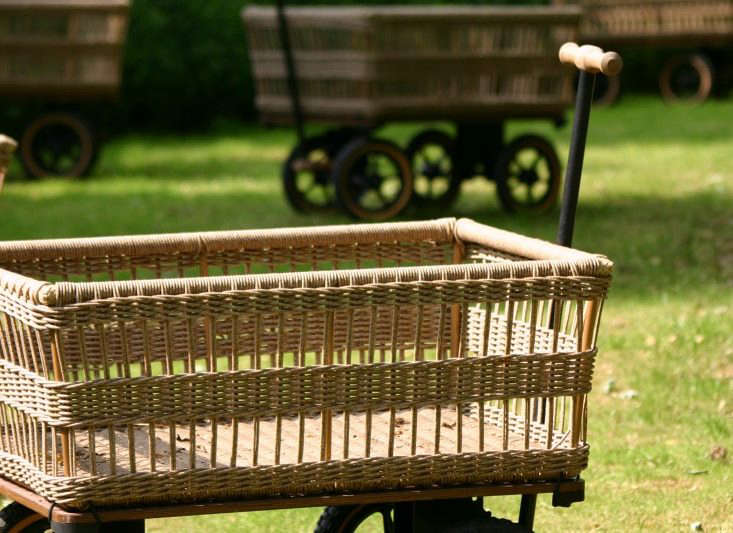
II. Key Considerations for Garden Carts and Wagons
A. Size and Capacity
One of the fundamental considerations when choosing a garden cart or wagon is its size and capacity. The size of the cart or wagon should be suitable for the intended use, ensuring that it can accommodate the gardening tools, supplies, and produce that you need to transport. Additionally, the weight capacity is an important factor, as it dictates the maximum load the cart or wagon can handle without compromising its functionality.
B. Material Durability and Weather Resistance
The durability and weather resistance of the materials used in garden carts and wagons are critical to their longevity and performance. Opting for a cart or wagon constructed from sturdy, weather-resistant materials such as steel, heavy-duty plastic, or rust-resistant aluminum ensures that it can withstand the rigors of outdoor use and exposure to the elements, prolonging its lifespan.
C. Maneuverability and Wheel Type
The maneuverability and wheel type of a garden cart or wagon greatly impact its usability. Consider the terrain in which the cart or wagon will be used and select a model with appropriate wheel types – such as pneumatic, semi-pneumatic, or solid wheels – to ensure smooth movement across various surfaces. Additionally, features like pivoting front wheels or a multi-directional design can enhance maneuverability, making it easier to navigate around tight spaces and corners.
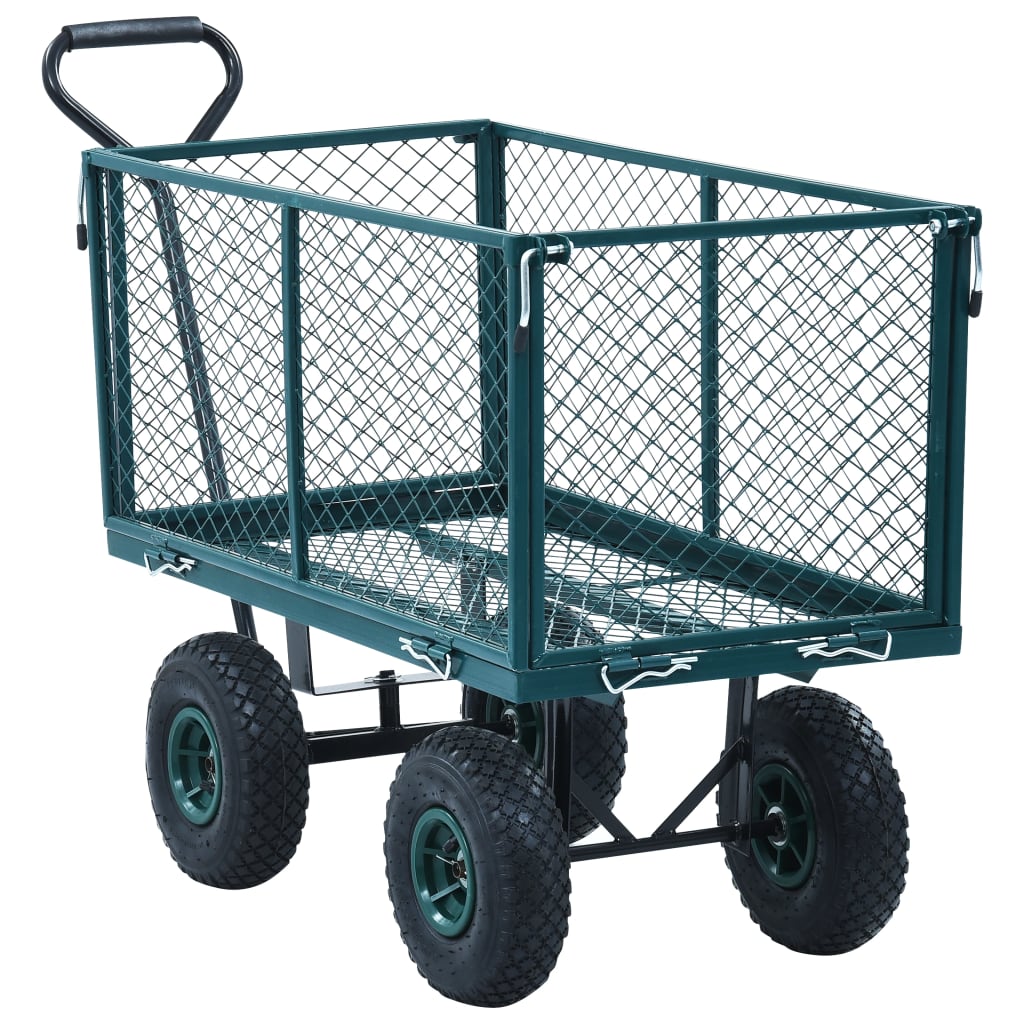
III. Types of Garden Carts and Wagons
A. Traditional Wheelbarrows
Traditional wheelbarrows, with their one or two front wheels and a single handle for easy tipping and maneuvering, are a staple in gardening and construction. They are especially useful for transporting heavy or bulky items such as soil, mulch, rocks, and plants, making them an indispensable tool for gardening and landscaping tasks.
B. Utility Carts
Utility carts, often designed with a flatbed and four wheels, are suitable for a variety of gardening activities. They provide ample space for hauling gardening materials, equipment, and vegetation, and their stable construction makes them ideal for heavier loads. Utility carts can also be coupled with towing hitches for easy attachment to lawn tractors or ATVs for added convenience.
C. Dump Carts
Dump carts are designed with a tilting feature that allows the bed to be easily unloaded, making them particularly handy for transporting and unloading loose materials like gravel, sand, or compost. The ability to dump the contents with minimal effort and precision makes dump carts an efficient choice for large-scale gardening, landscaping, and construction projects.
D. Folding Wagons
Folding wagons are versatile and portable options for gardeners who require a lightweight and collapsible solution for transporting gardening supplies or produce. These wagons are easy to store, transport, and set up, and they are well-suited for various outdoor activities, including gardening, picnicking, camping, and beach outings.
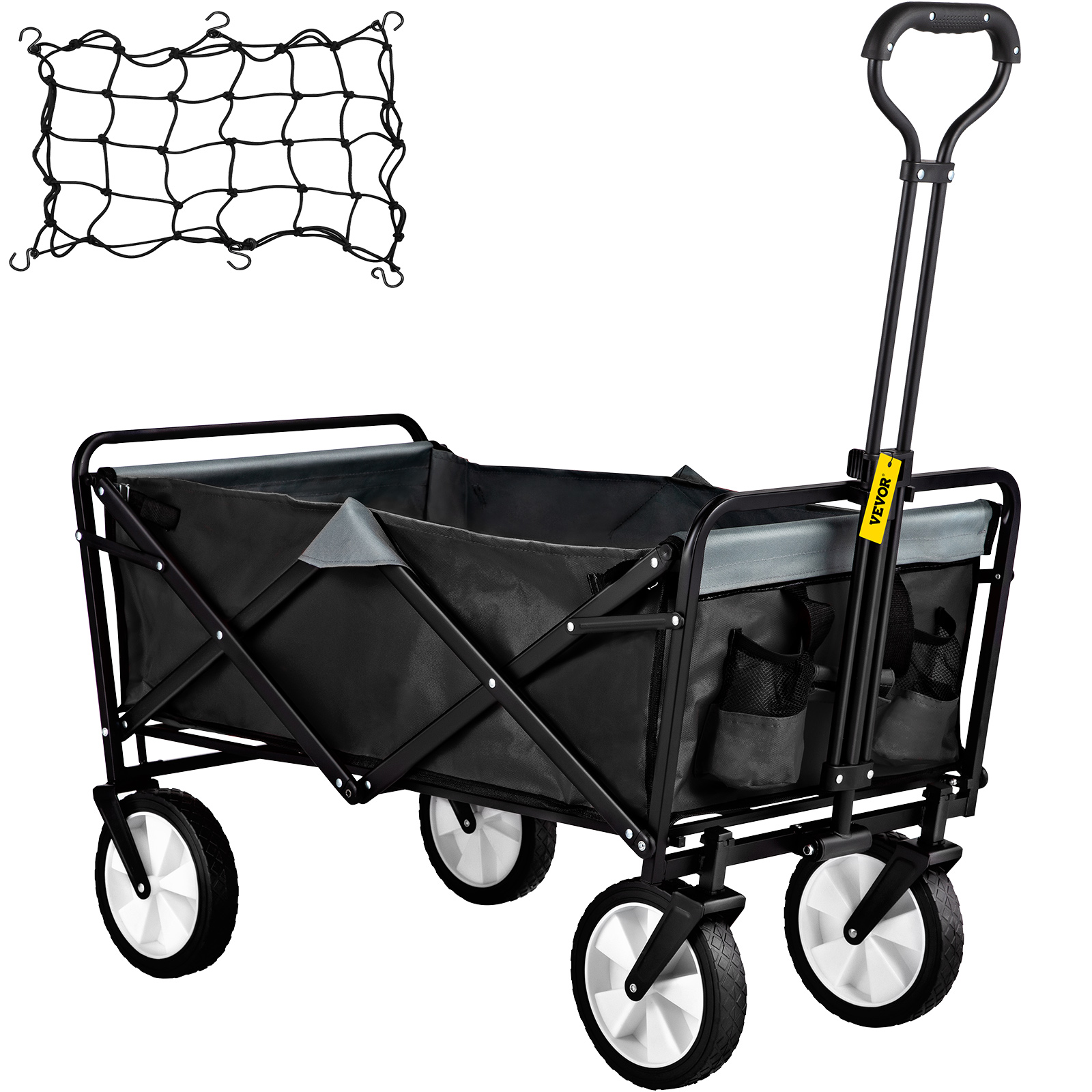
IV. Specialized Features and Accessories
A. Storage Compartments and Organizational Tools
Many garden carts and wagons are equipped with storage compartments, pockets, or racks to keep gardening tools, gloves, seeds, and other essentials organized and easily accessible. Having dedicated storage options within the cart or wagon improves overall convenience and efficiency during gardening tasks.
B. Ergonomic Handles and Comfort Features
Ergonomically designed handles play a significant role in the ease of use and maneuverability of garden carts and wagons. Comfortable grips and handle designs reduce strain on the user’s hands, allowing for prolonged use without discomfort. Additionally, features such as padded handles and adjustable height settings further enhance user comfort and control.
C. Hitch Attachments for Tractor or ATV Towing
Some larger utility carts and wagons come with hitch attachments that enable them to be towed by lawn tractors, ATVs, or other utility vehicles. This feature expands the functionality of the cart or wagon, allowing for effortless transportation of heavy loads across larger garden areas or properties.
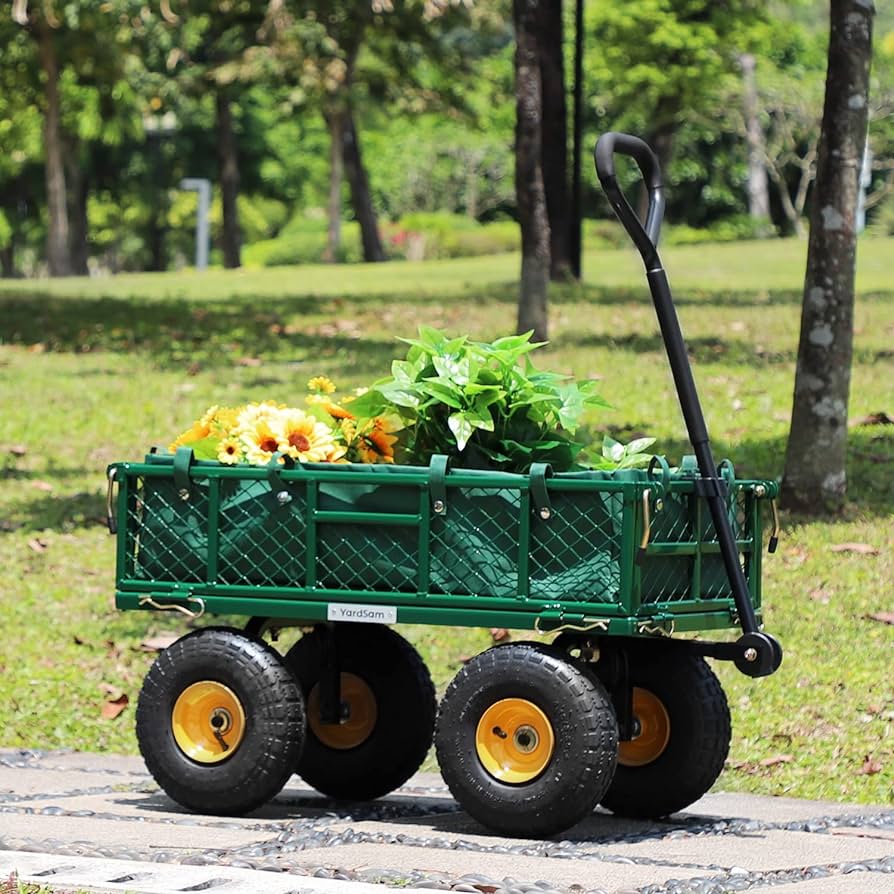
V. Factors for Different Gardening Needs
A. Applicability in Flower and Vegetable Gardens
When selecting a garden cart or wagon, consider its suitability for the specific tasks involved in flower and vegetable gardening. The cart’s size and functionality should align with the scale of activities, such as transporting potted plants, soil amendments, and harvested produce, in gardens of varying sizes.
B. Utilization in Landscaping and Lawn Maintenance
For landscaping and lawn maintenance applications, the cart or wagon’s load-bearing capacity, maneuverability, and design play a crucial role in efficient material transport, debris removal, and general upkeep of outdoor spaces. Choosing a cart or wagon tailored to these tasks enhances the effectiveness of landscaping and lawn care projects.
C. Considerations for Large-Scale and Commercial Gardening
In large-scale or commercial gardening settings, the demands placed on garden carts and wagons are significantly higher. Factors like load capacity, durability, and ease of maneuvering become even more critical, as the equipment may be required to handle heavy-duty tasks and frequent, intensive use.
VI. Comparison of Affordability and Budget-Friendly Options
A. Evaluating Value for Money
Various models of garden carts and wagons are available at different price points, and it’s important to assess their value for money. Consider the quality, features, and durability of the cart or wagon in relation to its price to make an informed purchasing decision that aligns with your budget and requirements.
B. Balancing Cost and Quality in Garden Carts and Wagons
While budget-friendly options are available, it is crucial to prioritize factors like material quality, build construction, and functionality when selecting a garden cart or wagon. Striking a balance between cost and quality ensures that you invest in a durable and reliable tool that meets your gardening needs effectively.
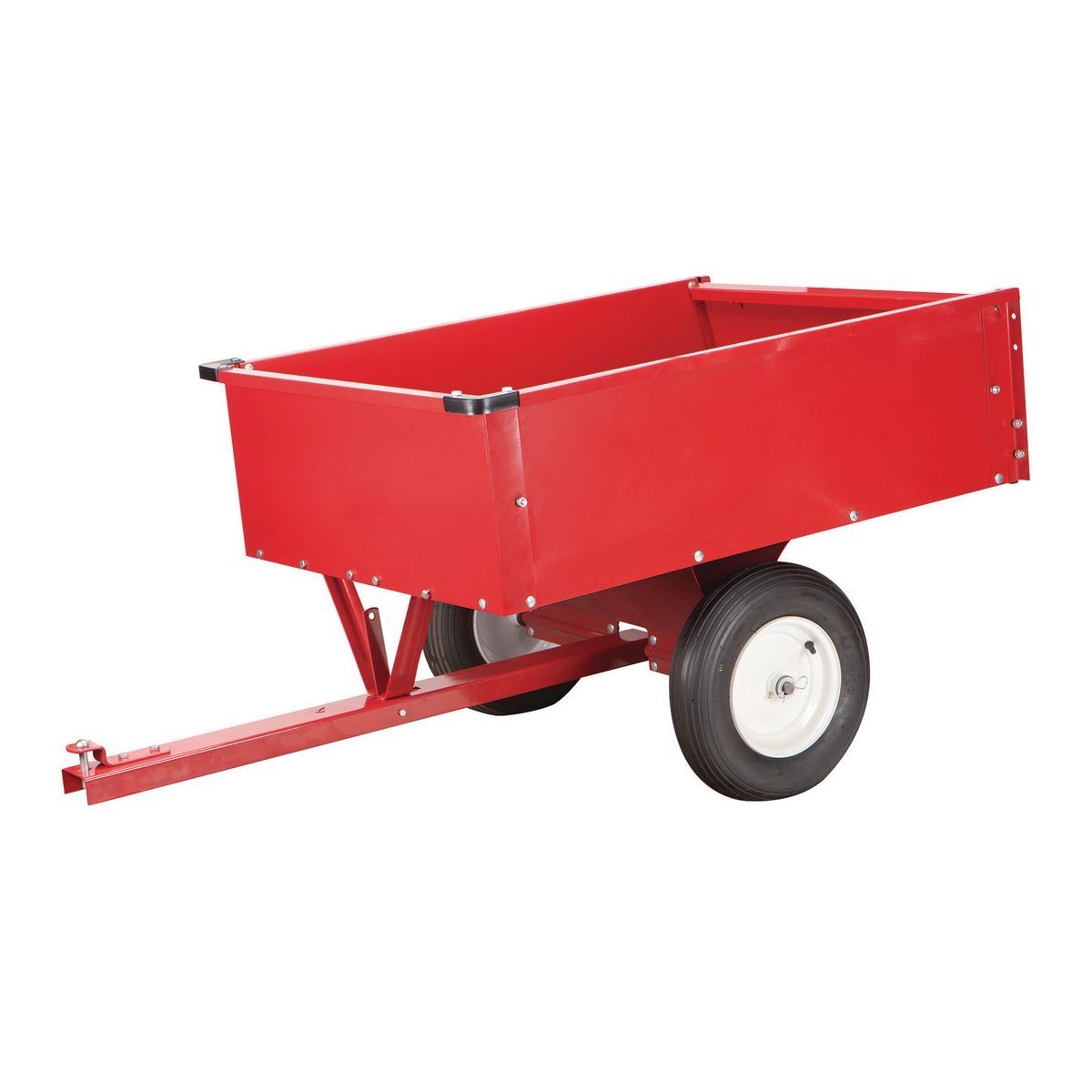
VII. Reviews and Recommendations
A. Highlighting Top-Rated Garden Carts and Wagons
Consumer reviews and expert recommendations can offer valuable insights into the performance and suitability of different garden carts and wagons. By exploring top-rated models and their user feedback, you can gain a better understanding of the practical advantages and limitations of various options, aiding in the selection process.
B. User Feedback and Customer Reviews
Examining user feedback and customer reviews for specific garden carts and wagons provides firsthand accounts of the products’ usability, durability, and overall satisfaction. Learning about the experiences of other gardeners can provide additional perspective when considering the best options for your gardening needs.
VIII. Maintenance and Care Tips
A. Proper Cleaning and Storage Techniques
Regular cleaning and maintenance help preserve the longevity and performance of garden carts and wagons. Understanding the appropriate cleaning methods and storage practices, such as protecting the equipment from harsh weather conditions and corrosive substances, can extend its lifespan and usability.
B. Preventative Maintenance for Long-Term Durability
Performing routine checks and basic maintenance tasks, including lubricating moving parts, tightening fasteners, and inspecting the wheels and tires, can prevent premature wear and ensure the continued functional integrity of the garden cart or wagon.
IX. Conclusion
A. Recap of the Versatile Usage of Garden Carts and Wagons
Garden carts and wagons are versatile and indispensable tools that cater to various gardening needs, providing efficient transportation, organization, and support for a wide range of gardening tasks.
B. Encouraging Informed Decisions and Optimal Selection for Individual Gardening Needs
By carefully considering the key factors, types, specialized features, and factors relevant to different gardening needs, and by evaluating affordability, user feedback, and maintenance tips, gardeners can make well-informed decisions when selecting the best garden cart or wagon to suit their unique gardening requirements.